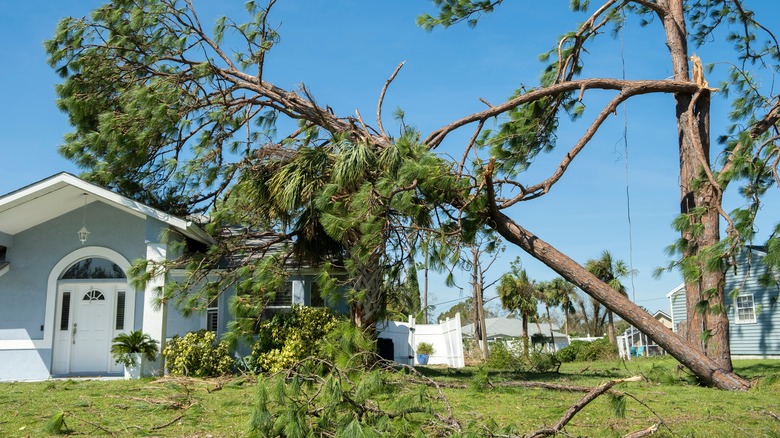How To Determine If You're Eligible For Storm-Related Home Improvement Grants
Storm-related damage can quickly become a neighborhood nightmare that never ends. Soggy floors, ruined furniture, and precious family heirlooms soaked or shattered beyond repair are heartbreaking to face. Even after the shock wears off, the financial stress can be just as devastating, especially when repairs stretch far beyond what your insurance will cover. If you're among the millions of Americans impacted by a natural disaster each year, know that several storm-related home repair and improvement programs exist to help. To determine your eligibility quickly, check if your area has a federal disaster declaration in place, thoroughly document your home's damage, and gather proof of income, insurance, and residency before applying for assistance.
Although there are smart ways you can prep your home to minimize damage, sometimes all you can do is ride the storm out. Fortunately, federal agencies including FEMA, the U.S. Small Business Administration, the Department of Housing and Urban Development, and the Farm Service Agency, along with nonprofit and faith-based organizations, mobilize quickly when disasters strike. These groups often provide emergency grants, low-interest loans, and case management services when hurricanes, tornadoes, wildfires, or floods overwhelm local resources.
Understanding whether a federal disaster has been declared in your area is the first step in determining your eligibility for storm-related home improvement grants. You can find out by visiting DisasterAssistance.gov, checking FEMA's disaster declarations map, or contacting your state's emergency management office directly. If your county is in an active disaster zone, it unlocks eligibility for federal recovery and repair programs.
Gather documentation before applying for disaster relief funding
You'll have a lot on your mind after experiencing a natural disaster. Wondering what to do when your home is damaged by a storm, wildfire, or other extreme weather event can feel overwhelming. Once you've confirmed your area is part of an active disaster zone, the next step is determining whether you qualify for federal or state assistance. Eligibility typically depends on your citizenship and immigration status, the extent of your damage, your insurance coverage, and your income. DisasterAssistance.gov can guide you on which programs are open to you along with their specific criteria.
To substantiate your level of need, the most important thing you can do is document the damage immediately before cleanup begins. Take both wide and close-up photos or videos of every affected area in your home, including walls, flooring, roofs, and any ruined personal items. Make sure they are date- and time-stamped. If you pay for any temporary repairs, lodging, or replacement items prior to receiving insurance compensation or grant funding, photograph everything and keep receipts. Once you have your documentation in hand, contact your insurance company to file a claim as soon as you can.
To maximize your chance of being deemed eligible for funding, the next step is to submit your applications promptly. FEMA and other agencies will ask you for documentation showing exactly what your insurance covers. If you've lost those records, request written copies from your insurance company when you file your claim. Responding quickly to requests for more information and maintaining regular contact with your case managers will help them more quickly determine your eligibility for funding. Remain persistent, organized, and honest with each agency until you secure the financial help you need to rebuild.

